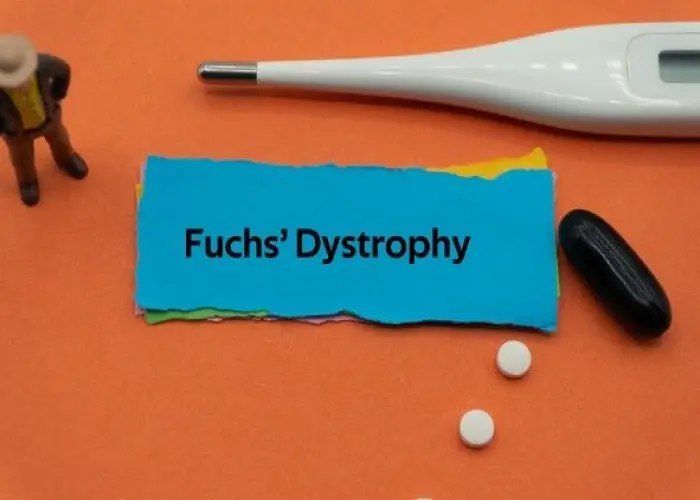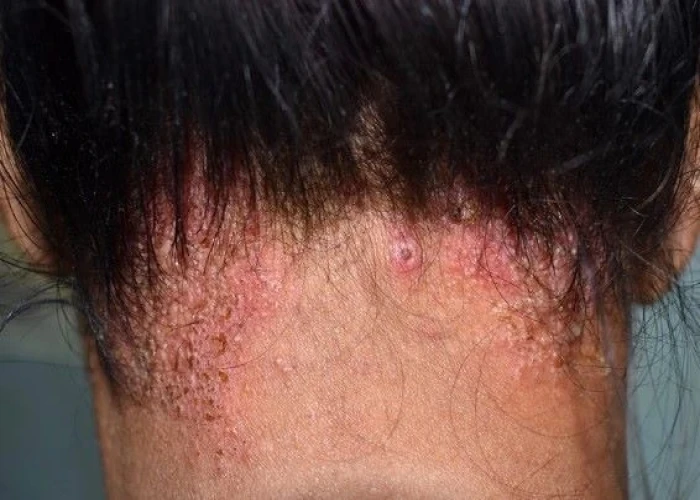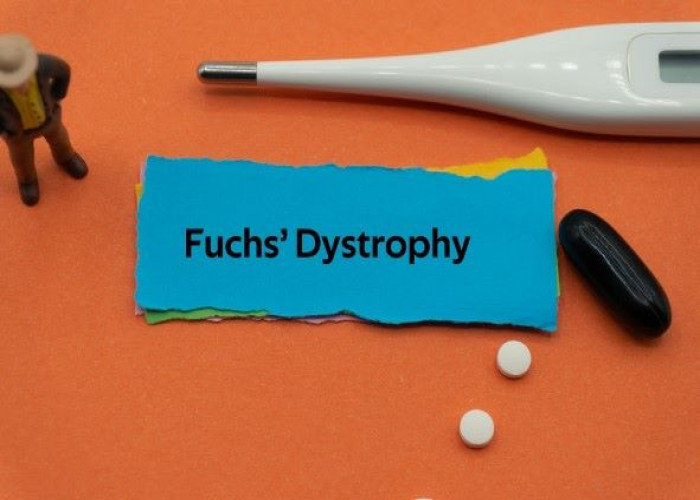 Welcome
Welcome
“May all be happy, may all be healed, may all be at peace and may no one ever suffer."
Fuchs' dystrophy

Fuchs' dystrophy is a progressive eye disease that affects the cornea, which is the clear, dome-shaped surface that covers the front of the eye. The condition is caused by the gradual loss of cells in the cornea, leading to fluid buildup and damage to the corneal tissue.
Fuchs' dystrophy typically affects both eyes and may cause a variety of symptoms, including:
- Blurred or cloudy vision, especially in the morning
- Sensitivity to light
- Halos or glare around lights
- Difficulty seeing at night
- Pain or discomfort in the eyes
- Reduced visual acuity
Fuchs' dystrophy is more common in women than in men and tends to develop in middle-aged or older individuals. It may also have a genetic component, as the condition can sometimes run in families.
Diagnosis of Fuchs' dystrophy typically involves a comprehensive eye exam, including measurement of visual acuity, evaluation of the cornea and other parts of the eye, and measurement of corneal thickness. In some cases, corneal imaging may also be used to help diagnose the condition.
Treatment for Fuchs' dystrophy may include medications, such as eye drops or ointments, to reduce swelling and discomfort in the eyes. In advanced cases, corneal transplant surgery may be necessary to replace the damaged corneal tissue with healthy donor tissue.
It is important to work with a healthcare professional to develop a treatment plan that is appropriate for your individual needs. Early diagnosis and treatment can help prevent the condition from becoming worse and can improve the chances of a successful treatment outcome.
Research Papers
Disease Signs and Symptoms
- Blurred vision of eye
- Fluctuating vision
- Bright light is unbearable
- Glare, which can decrease your vision in dim and bright light.
- Pain or grittiness from tiny blisters on the surface of your cornea.
- Pain or burning in the stomach, bloating, excessive belching, or nausea after meals
Disease Causes
Fuchs' dystrophy
Normally, the cells lining the inside of the cornea (endothelial cells) help maintain a healthy balance of fluid within the cornea and prevent the cornea from swelling. But with Fuchs' dystrophy, the endothelial cells gradually die or do not work well, resulting in fluid buildup (edema) within the cornea. This causes corneal thickening and blurred vision.
Fuchs' dystrophy is usually inherited. The genetic basis of the disease is complex — family members can be affected to varying degrees or not at all.
Disease Prevents
Disease Treatments
Some nonsurgical treatments and self-care strategies might help relieve the symptoms of Fuchs' dystrophy. If you have severe disease, your doctor might suggest surgery.
Medications and other therapies
- Eye medication. Saline (5% sodium chloride) eyedrops or ointments can help reduce the amount of fluid in your cornea.
- Soft contact lenses. These act as a covering to relieve pain.
Surgery
People who have surgery for advanced Fuchs' dystrophy can have much better vision and remain symptom-free for years afterward. Surgical options include:
- Transplanting the inner layer of the cornea. Known as Descemet membrane endothelial keratoplasty (DMEK), this procedure involves replacing the back layer of the cornea with healthy endothelial cells from a donor. The procedure is usually done with local anesthesia in an outpatient setting.
- Transplanting the cornea. If you have another eye condition or have had previous eye surgery, DMEK may not be an option. Your doctor may recommend a partial-thickness cornea transplant, a procedure known as Descemet-stripping endothelial keratoplasty (DSEK). Rarely, a full-thickness cornea transplant, known as penetrating keratoplasty (PK), may be recommended.
Potential future treatments
A variety of new treatments are being investigated that could change how Fuchs' dystrophy is managed in the future. After the genetic abnormality associated with most cases of Fuchs' dystrophy was discovered, there is a better understanding of how the disease might develop, and this offers the potential for nonsurgical therapies in the future. Various eyedrop treatments are being developed and may enter clinical trials in the future. Novel surgical treatments also are being studied to determine if they may be of benefit.
Disease Diagnoses
Disease Allopathic Generics
Disease Ayurvedic Generics
Disease Homeopathic Generics
Disease yoga
Fuchs' dystrophy and Learn More about Diseases

MCAD deficiency

Heart murmurs

Pinched nerve

Chronic fatigue syndrome

Ringworm (scalp)

Age spots (liver spots)

Wilson's disease

Giant cell arteritis
fuchs' dystrophy, ফুচস ডিসস্ট্রফি
To be happy, beautiful, healthy, wealthy, hale and long-lived stay with DM3S.
